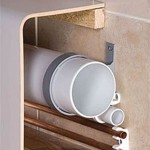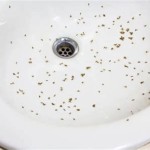How to Install a Studor Vent for a Bathroom Sink
A Studor vent, also known as an air admittance valve, is a crucial component in any plumbing system, especially in bathrooms. It prevents the formation of a vacuum in drain lines, which can lead to slow drains, gurgling sounds, and even sewer gases escaping into the bathroom. Installing a Studor vent is a simple yet effective way to ensure proper ventilation and eliminate these plumbing problems.
This article will provide a comprehensive guide on how to install a Studor vent for a bathroom sink. The steps outlined below are applicable to most standard bathroom sink installations and address various common scenarios. However, it is always advisable to consult relevant building codes and manufacturer instructions for specific installations.
Understanding the Studor Vent
A Studor vent is a one-way valve that allows air to enter the drain line when a vacuum forms. It consists of a body, a spring-loaded valve, and a threaded connection. The valve opens automatically when pressure in the drain line drops, allowing air to enter and equalize the pressure. Once pressure is restored, the valve automatically closes, preventing any backflow.
Studor vents are available in various sizes and materials, including PVC, ABS, and copper. They are generally installed on the drain line within a short distance of the sink fixture, often directly on the trap arm. The exact location and type of Studor vent will depend on the specific plumbing configuration.
Step-by-Step Installation Guide
The following steps outline the typical installation process for a Studor vent on a bathroom sink drain line. It is essential to familiarize yourself with the specific requirements of the vent and your plumbing system before commencing the installation.
Materials Needed:
- Studor vent (appropriate size and material)
- PVC pipe (if needed)
- PVC cement or other suitable adhesive
- Pipe cutter
- Primer (if necessary)
- Plumber's tape
- Adjustable wrench or pipe wrenches
- Level
- Safety glasses
- Gloves
Steps:
- Turn off the water supply to the sink. This is essential to prevent water from escaping during the installation process.
- Locate the trap arm. This is the section of the drain line that connects the sink drain to the main drain line. It is usually located under the sink.
- Determine the installation point. Choose a point on the trap arm where the Studor vent can be easily installed. It is generally recommended to install the vent within 18 inches of the trap.
- Cut the trap arm using a pipe cutter at the chosen installation point. Ensure that the cut is clean and straight.
- Prepare the pipe ends. If necessary, use a deburring tool to remove any sharp edges from the cut pipe ends. The ends should be smooth for a secure connection.
- Apply primer to the pipe ends if using a primer-based adhesive for the PVC pipe. Allow the primer to dry before proceeding.
- Apply PVC cement to the inside of the fitting on the Studor vent and the outside of the pipe ends. Be sure to apply a generous amount of cement to ensure a strong bond.
- Connect the Studor vent to the drain line. Connect the Studor vent to the trap arm, making sure the vent is securely attached to the drain line. This typically requires twisting the vent until it is snug.
- Install the Studor vent on the trap arm by inserting the Studor vent fitting onto the cut pipe end. Ensure a tight and secure connection.
- Apply plumber's tape to the threads of the outlet on the Studor vent. This will help ensure a leak-free connection.
- Connect the outlet of the Studor vent to the vent stack or vent pipe. This will allow air to escape from the drain line.
- Turn the water supply back on and check for leaks. Make sure all joints are secure and there are no leaks.
- Flush the sink to ensure proper drainage. Make sure the sink drains effectively without gurgling or other signs of a vacuum.
Important Considerations
While the installation process may seem straightforward, several factors should be considered for a successful and code-compliant installation:
- Vent Stack Height: The vent stack, the pipe that connects the Studor vent to the roof, needs to be a certain height above the highest fixture in the plumbing system. This ensures proper ventilation and prevents sewer gases from entering the system.
- Vent Pipe Size: The size of the vent pipe should be appropriately sized for the drainage system, ensuring adequate airflow for effective ventilation. Refer to local building codes for specific requirements.
- Vent Pipe Material: Ensure the vent pipe material is compatible with the drain line materials, such as PVC, ABS, or copper.
- Local Building Codes: Before any plumbing work, including Studor vent installation, always consult local building codes to ensure compliance. The specific requirements may vary based on location and building type.

Magic Vent

How To Install An Oatey Sure Vent Air Admittance Valve

How To Install Vent Under Sink

How To Install A Drain With An Air Admittance Valve

How To Install Vent Under Sink

Codenotes Installation Of Air Admittance Valves Icc

Codenotes Installation Of Air Admittance Valves Icc

Studer Vent Plumbing Forum The Inspector S Journal

Kitchen Bath Venting With Air Admittance Valves Jlc

How To Install Vent Under Sink
Related Posts







